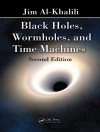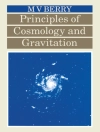This book discusses autonomous spacecraft navigation based on X-ray pulsars, analyzing how to process X-ray pulsar signals, how to simulate them, and how to estimate the pulse’s time of arrival based on epoch folding. In turn, the book presents a range of X-ray pulsar-based spacecraft positioning/time-keeping/attitude determination methods. It also describes the error transmission mechanism of the X-ray pulsar-based navigation system and its corresponding compensation methods. Further, the book introduces readers to navigation based on multiple measurement information fusion, such as X-ray pulsar/traditional celestial body integrated navigation and X-ray pulsar/INS integrated navigation. As such, it offers readers extensive information on both the theory and applications of X-ray pulsar-based navigation, and reflects the latest developments in China and abroad.
表中的内容
Introduction.- X-ray pulsar signal processing.- X-ray pulsar/multiple measurement information fused navigation.- Ground-based simulation and verification system for X-ray pulsar-based navigation.
关于作者
The authors serve on the Flight Dynamics and Control Team at the National University of Defense Technology, which is one of the leading teams on X-ray pulsar-based navigation in China. They have been studying the theory and methodology of X-ray pulsar-based navigation since 2004.












